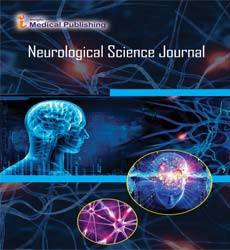The Role of Synapse and its Types in the Neurons
Kevin Saunders*
Department of Neurology, Alexandria University,Copenhagen, Denmark
- *Corresponding Author:
- Saunders Kevin
Department of Neurology,
Alexandria University,
Copenhagen,
Denmark,
E-mail: Saunder s.kn@321.de
Received Date: December 06, 2021 Accepted Date: December 20, 2021 Published Date: December 27, 2021
Citation: Saunders K (2021) The Role of Synapse and its Types in the Neurons. Neurol. Sci. Vol.5 No.6: e006
Editorial Note
In the sensory system, a synapse is a structure that allows a neuron (or nerve cell) to pass an electrical or compound sign to another neuron or to the objective effector cell. Neurotransmitters are vital for the transmission of apprehensive motivations starting with one neuron then onto the next. Neurons are specific to pass signs to individual objective cells, and neurotransmitters are the means by which they do as such. At a neurotransmitter, the plasma layer of the sign passing neuron (the presynaptic neuron) comes into close relation with the film of the objective (postsynaptic) cell. Both the presynaptic and postsynaptic destinations contain broad varieties of subatomic hardware that connect the two layers together and complete the flagging system. In numerous neurotransmitters, the presynaptic part is situated on an axon and the postsynaptic part is situated on a dendrite or soma. Astrocytes likewise trade data with the synaptic neurons, reacting to synaptic action and, thusly, managing neurotransmission. Synapses (basically substance neurotransmitters) are settled in position by synaptic attachment particles (SAMs) projecting from both the pre-and post-synaptic neuron and staying together where they crossover; SAMs may likewise aid the age and working of synapses.
A few creators sum up the idea of the neurotransmitter to incorporate the correspondence from a neuron to some other cell type, for example, to an engine cell, albeit such nonneuronal contacts might be alluded to as intersections (a generally more seasoned term). A milestone concentrate by Sanford Palay exhibited the presence of synapses.
There are two essentially different types of neurotransmitters: In a chemical synapse, electrical action in the presynaptic neuron is changed over (through the enactment of voltage-gated calcium channels) into the arrival of a substance considered a synapse that ties to receptors situated in the plasma film of the postsynaptic cell. The synapse might start an electrical reaction or an auxiliary courier pathway that may either invigorate or restrain the postsynaptic neuron. Substance neural connections can be arranged by the synapse delivered: glutamatergic (regularly excitatory), GABAergic (frequently inhibitory), cholinergic (for example vertebrate neuromuscular intersection), and adrenergic (delivering norepinephrine). Due to the intricacy of receptor signal transduction, compound neural connections can affect the postsynaptic cell.
In an electrical neurotransmitter, the presynaptic and postsynaptic cell layers are associated by exceptional channels called hole intersections that are able to do passing an electric flow, causing voltage changes in the presynaptic cell to prompt voltage changes in the postsynaptic cell. The primary benefit of an electrical neural connection is the quick exchange of signs from one cell to the next. Synaptic correspondence is unmistakable from an emphatic coupling, in which correspondence between neurons happens through roundabout electric fields. An autapse is a substance or electrical neurotransmitter that structures when the axon of one neuron neural connections onto dendrites of a similar neuron.
It is broadly acknowledged that the neural connection assumes a part in the development of memory. As synapses actuate receptors across the synaptic parted, the association between the two neurons is reinforced when the two neurons are dynamic simultaneously, because of the receptor's flagging instruments. The strength of two associated neural pathways is thought to bring about the capacity of data, bringing about memory. This course of synaptic reinforcing is known as long haul potentiation.
By changing the arrival of synapses, the versatility of neural connections can be controlled in the presynaptic cell. The postsynaptic cell can be managed by modifying the capacity and number of its receptors. Changes in postsynaptic flagging are most regularly connected with a N-methyl-d-aspartic corrosive receptor (NMDAR) - subordinate long haul potentiation (LTP) and long haul gloom (LTD) because of the inundation of calcium into the post-synaptic cell, which are the most examined types of versatility at excitatory synapses.
Open Access Journals
- Aquaculture & Veterinary Science
- Chemistry & Chemical Sciences
- Clinical Sciences
- Engineering
- General Science
- Genetics & Molecular Biology
- Health Care & Nursing
- Immunology & Microbiology
- Materials Science
- Mathematics & Physics
- Medical Sciences
- Neurology & Psychiatry
- Oncology & Cancer Science
- Pharmaceutical Sciences
